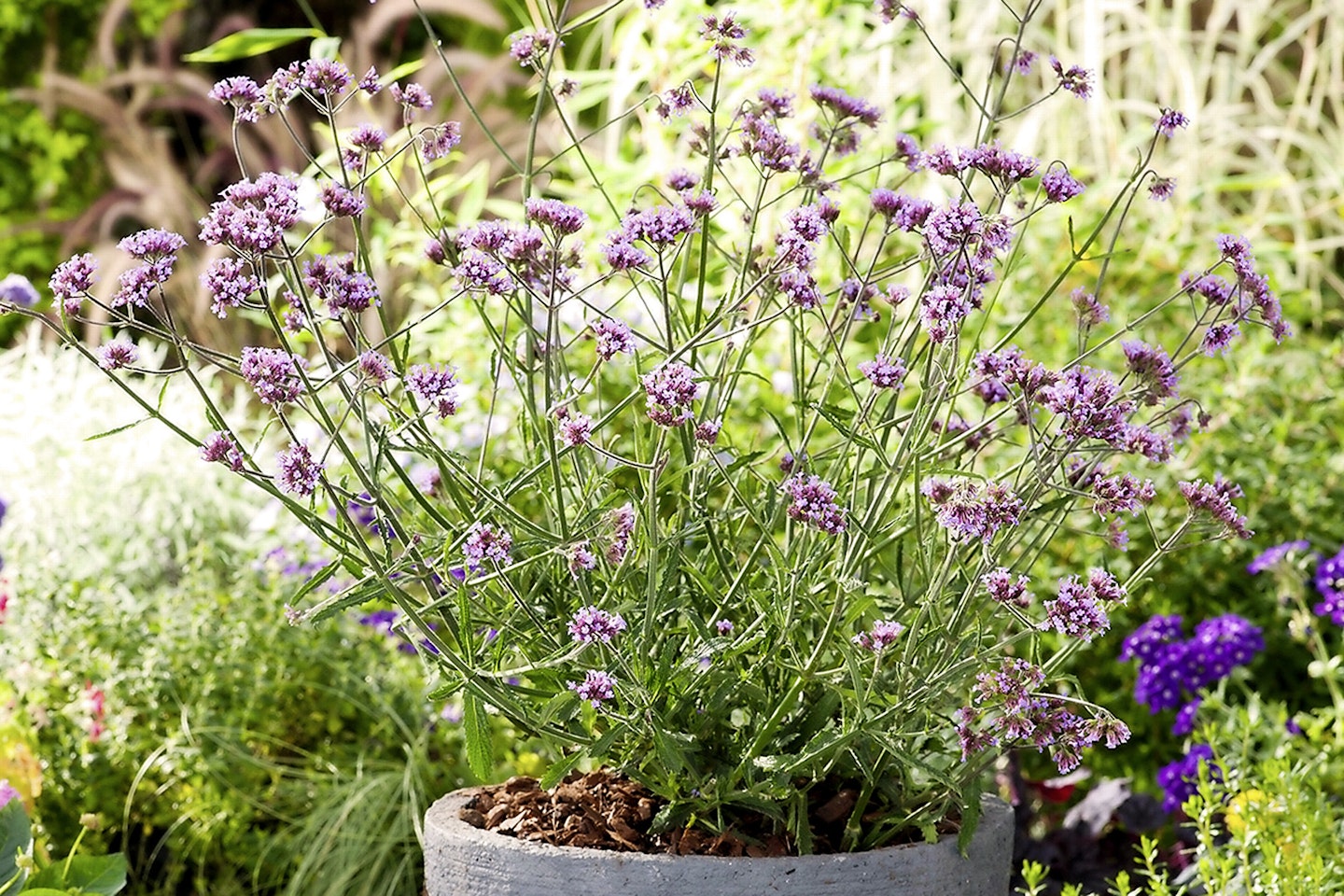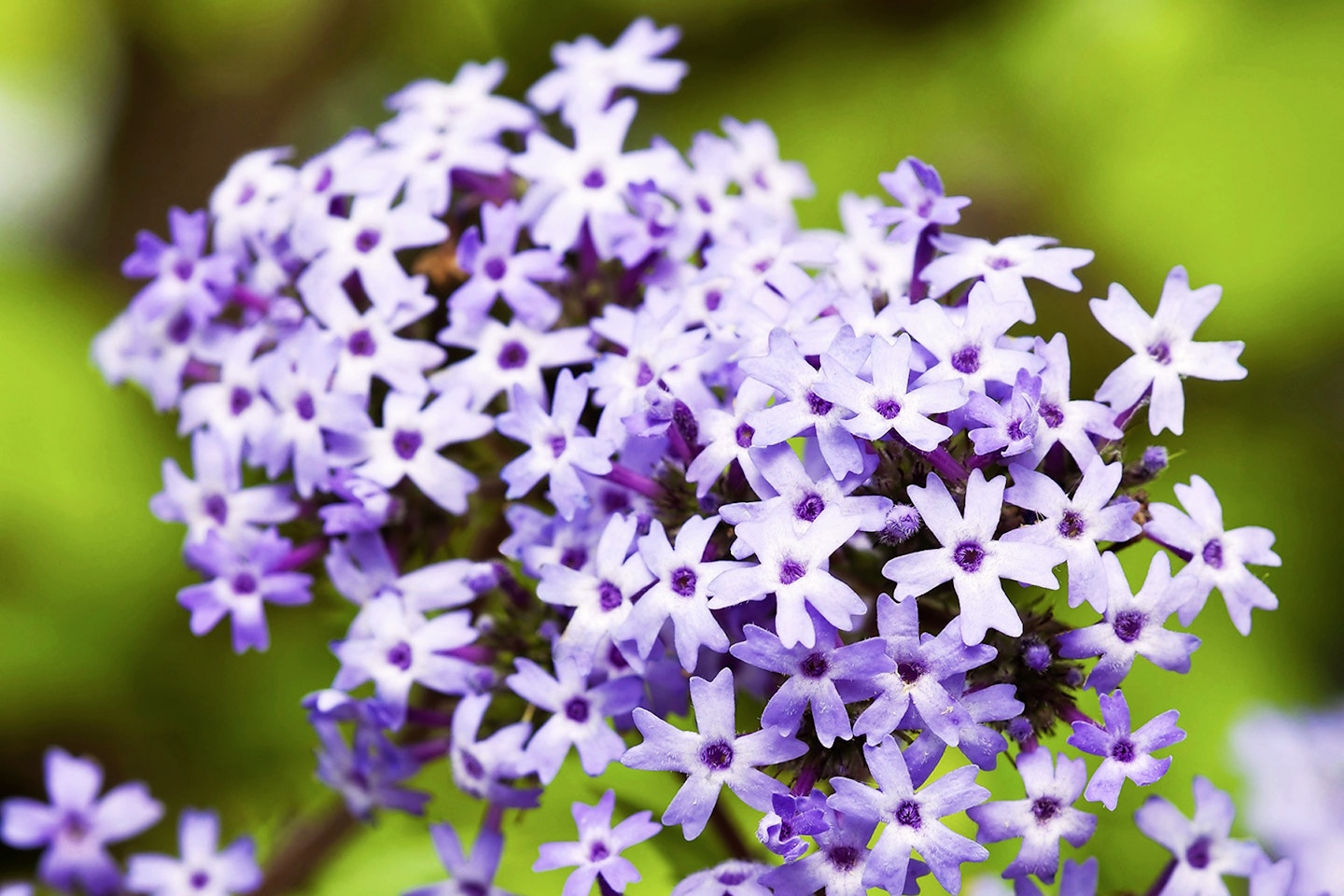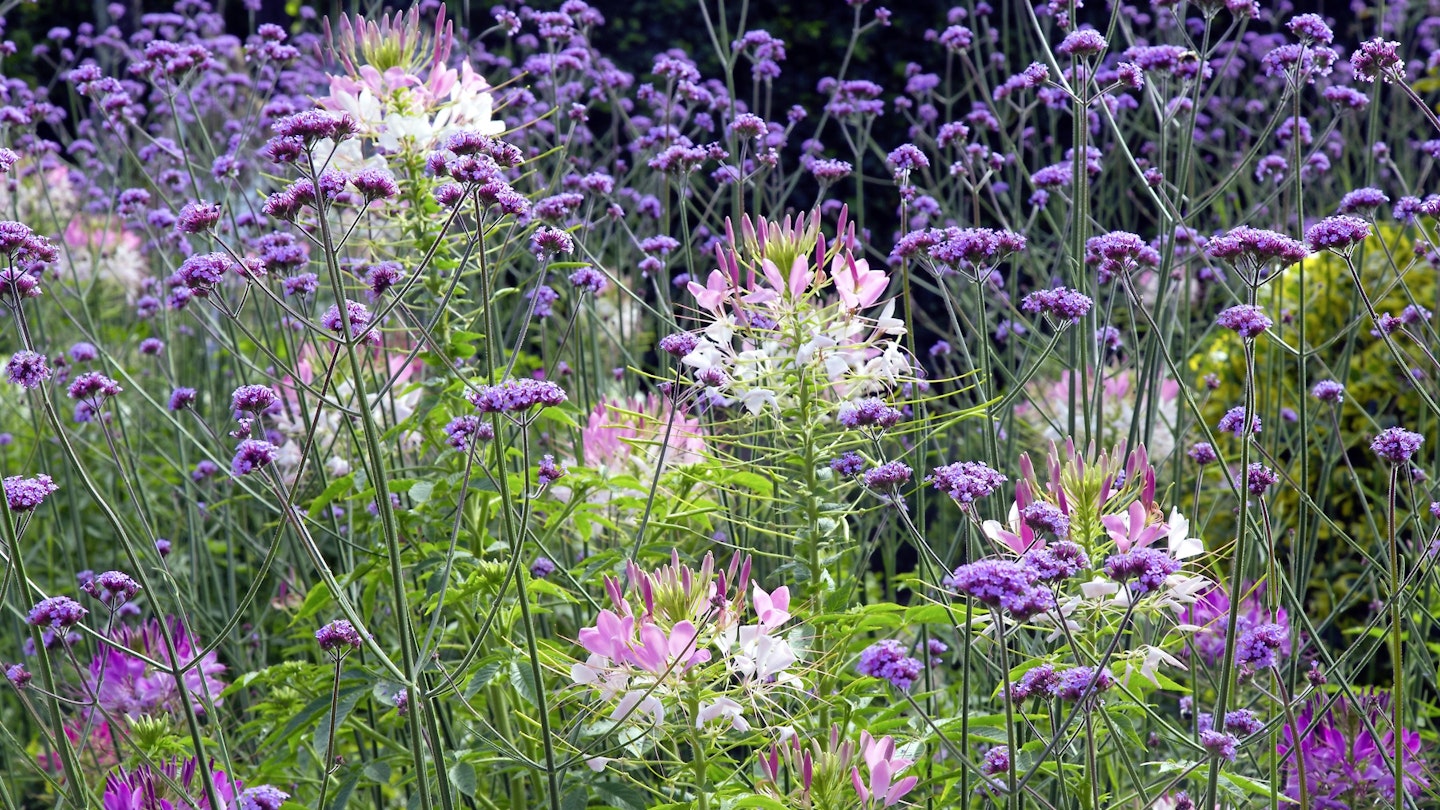Everyone loves verbena, whether clustered as brightly-coloured bedding, trailing from a hanging basket or coyly peeping through a profusion of cottage garden favourites. Professional garden designers adore stiff, upright Verbena bonariensis for its timeless elegance.
But there’s so much more to the genus - delve deeper and there’s a verbena for everyone. The Verbenaceae family is sprawling, venerable and complex – so complex, in fact, that some of the thousands of species have recently been reclassified to other families and most of them have countless varieties and hybrids.
Verbena officinalis, or common vervain, has held a potent place in folklore and medicine for millennia but for all its magical claims, it’s a scrawny individual. Usually found on chalky soils and scrubland, its tiny, lilac-coloured flowers emerge from coarse spikes poking from sparse, lobed leaves. International plant hunters, however, have bequeathed us a rainbow of varieties, now bred to a kaleidoscope of colours and heights.
The star of the show – Verbena bonariensis
The majestic spires of V. bonariensis, or Argentinian vervain, can power through mid-level planting to tower over a border, creating a net-curtain type haze. It can be used to add height, being up to 1.5m tall, make non-solid partitions for the garden or, as with the 24.4 metre-long walk at 2018’s Hampton Court Palace Flower Show, be massed in a single statement.
“We wanted to create something with an impact using just plants,” says Gemma Lake, Show Manager.
“It’s such a favourite; you see it everywhere but usually with other things. It’s got height and texture, it’s wildlife friendly, an easy plant to grow and something visitors know will do well in their own gardens. It shows you don’t need lots of different plants to have impact; something simple can look perfect.

"You can grow it at the front or the back; because it’s airy, it doesn’t block anything. We decided to run it along the long water, with a walk through the middle so that visitors can fully immerse themselves. The beds are deep; four metres each side, so visitors can get away from the bustle of the show.”
The man tasked with creating this spectacle was Will Lamb, of Baginton Nurseries, which specialises in growing large batches of plants for delivery at specific times. “We got the order for 6,000 plants just before Christmas 2017,” he says.
Baginton Nurseries has been growing verbena for decades, including bedding and trailing varieties for hanging baskets as well as V. bonariensis and the more compact V. rigida types. “The Hampton Court verbenas are the Buenos Aires variety, selected for their strong, tall flowers.”
Will’s team potted on plugs in February 2018 and were growing the plants with carefully regulated temperatures to achieve exactly the right height at exactly the right time. “They produced a magical effect,” he says.
The delayed RHS Hampton Court Palace Flower Show for 2020 takes place between September 10 to September 15 – tickets are available to buy online
Growing verbena
Sow indoors in early spring, and harden off before planting out in May. Like all verbenas, V. bonariensis likes a moist, well-drained soil, ideally neutral, in a sunny position.
Water bedding and trailing varieties regularly though, once established, V. bonariensis is fairly drought-tolerant.
Some varieties are perennial but in colder areas V. bonariensis is best treated as an annual. Elsewhere it’s worth mulching the roots in winter; they’ll thank you if it includes well-rotted manure or compost. Self-sown seedlings can be even tougher than the original plants.
Top tips to good maintenance
-
Deadhead bedding or trailing verbenas to keep them blooming all summer long.
-
Leave old flower spikes of V. bonariensis until new shoots arrive in spring. If you already have enough plants, however, remove seed heads in autumn to prevent self-seeding.
-
Some bedding verbenas are susceptible to powdery mildew. Keep the soil moist at all times to help prevent problems.
-
Young plants may be attacked by slugs and aphids.
-
If your verbena isn’t flowering, try moving it to a sunnier position.
Verbena planting suggestions
-
V. bonariensis is lovely cropping up among other things, and looks great with grasses in a prairie-style planting, but it complements most things and can take vibrant colours. It looks particularly good with bright orange geums.
-
Verbena is beloved of butterflies, which flock to its clusters of tiny flowers – it’s the perfect candidate for a wildlife garden.
-
Use V. bonariensis as a screening plant, its tall stature giving a wispy haze of stems and flowers to informally fence off another planting scheme. Beware of self-seeding though.
-
In silver, purple, blue and pink colour schemes, V. bonariensis can be dotted in between plants as a filler, enhancing and confirming the cool colours involved.
-
The jewel-colours of the bedding varieties work perfectly in both formal and cottage gardens. Prostrate and trailing varieties add volume and colour to hanging baskets, or cascading down from large pots.

Eight more verbena varieties to try
‘Superbena Burgundy’ – A stunning, almost neon, cerise trailing variety enjoying an extra-long flowering period. Available from Sarah Raven
V. hastata rosea – A stately alternative to V. bonariensis, with pale pink flowers on clustered spikes. Available from Claire Austin
‘Sissinghurst’ – A welcome change to purples; coral-pink fading through apricot. Ideal for filling gaps in containers. Available from Hayloft
V. rigida lilacina ‘Polaris’ – A creamy lilac verbena of similar height to V. rigida. Perfect for a blue-white scheme. Available from Bridge Nursery Perennials
V. rigida – A lower-growing vibrant purple verbena of around 45cm tall than V. bonariensis, upright and the perfect border gap filler. Available from Crocus
V. hastata ‘Alba’ – A beautiful white version of V. hastata, with small spikes of fluffy white flowers. Available from Bridge Nursery Perennials
Glandularia corymbosa (formerly V. corymbosa) – A pretty, creeping herbaceous filler plant with lilac flower clusters. Available from Norwell Nurseries, tel: 01636 636337
Verbena ‘Lollipop’ – A mini V. bonariensis, perfect to grow in a pot in the smallest of spaces. Half the height of its parent. Available from T&M
Verbena: did you know..?
-
The Romans used verbena for divination while the Saxons believed it protected against thunderstorms. By the middle ages, it could cure the plague, ward off witches and demons, drive away headaches, dispose of snakes and prevent dreams! Gun flints were boiled in rue and vervain to help them fire, and it was said that if you made a small cut in your hand and staunched the blood with a leaf of verbena, locks would magically open for you.
-
The 19th century bedding craze saw ever more gaudy verbena varieties, while a medieval tradition of strewing verbena leaves on a bridal chamber floor and stuffing pillows with the herb for its aphrodisiac qualities was updated to include scented verbena in wedding bouquets – at the back, though, as the leaves were considered untidy.
